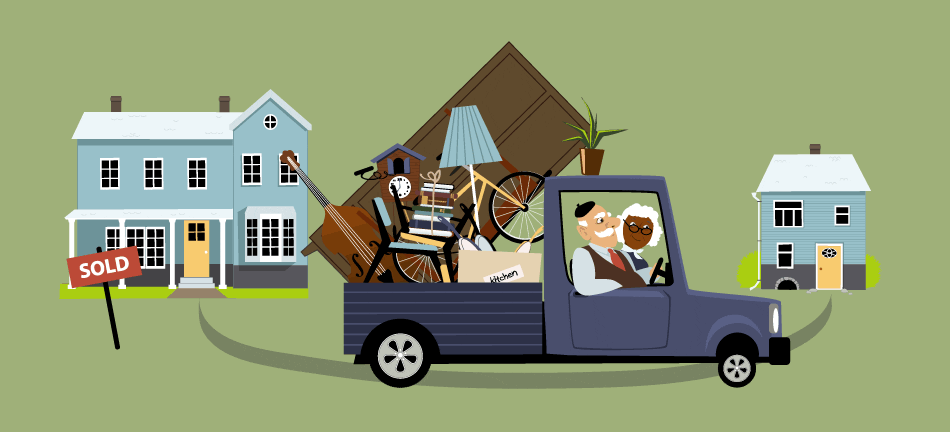
Are you or a parent planning to downsize? Moving to smaller digs can lead to more savings, but it also means less space for stuff. And if you’re planning to sell, you’ll need to cut the clutter when it goes on the market. Roll up your sleeves – it’s time to downsize!
1. Allow yourself three months, minimum, to sort through belongings.
If possible, start downsizing three months prior to your planned move. This will give you time to assess every room in your home, as well as the attic, basement, garage or storage shed. Map out a timeline and always clear one room before moving on to the next.
2. Categorize household items in black and white.
Leave no room for gray areas, or in this case, “maybe” piles. This is crucial whether you’re paring down your possessions or assisting a parent – many parents grow attached to their belongings, especially if they’ve been living in the same home for years. A helpful acronym to remember is OHIO: Only Handle It Once. Another trick is to ask yourself or your parents if you or they would replace the item if it disappeared. If the answer is no, it can go.
3. Cut collections down to most-treasured pieces only.
Scaling back a collection can be one of the most challenging parts of downsizing, because you or your parents have likely spent years accumulating pieces, and some items may be souvenirs from once-in-a-lifetime experiences. If you can, limit collections to just the favorites. If you’re still having trouble, consider this: a smaller home means smaller furniture, and that bookcase that used to display your collection simply won’t fit in your new home. For rare, valuable collections, an auction house can help sell the lot for a high-end price.
4. Purge multiples of common, non-sentimental items.
Keep in mind that your new home will have less square footage than your existing one. Don’t sacrifice precious space by moving duplicate items to your smaller home. Homeowners tend to have doubles of kitchen supplies most of all – think mixing bowls, spatulas and pot holders. Other common items ripe for multiplication include vases, hand towels and specialty soaps. Don’t forget your closets – avoid hanging on to clothing that “might fit one day.”
5. When in doubt, donate or sell.
Donating your items can help ease the transition because you know they’re going to a charitable organization. Visit SalvationArmy.org to find a truck in your area that can transport furniture or appliances, or call or visit the site of your favorite local charity to see if they accept household items in good condition. If you’d like to sell some of your items, keep in mind that Craigslist favors furniture and cars, and eBay charges a selling fee.








